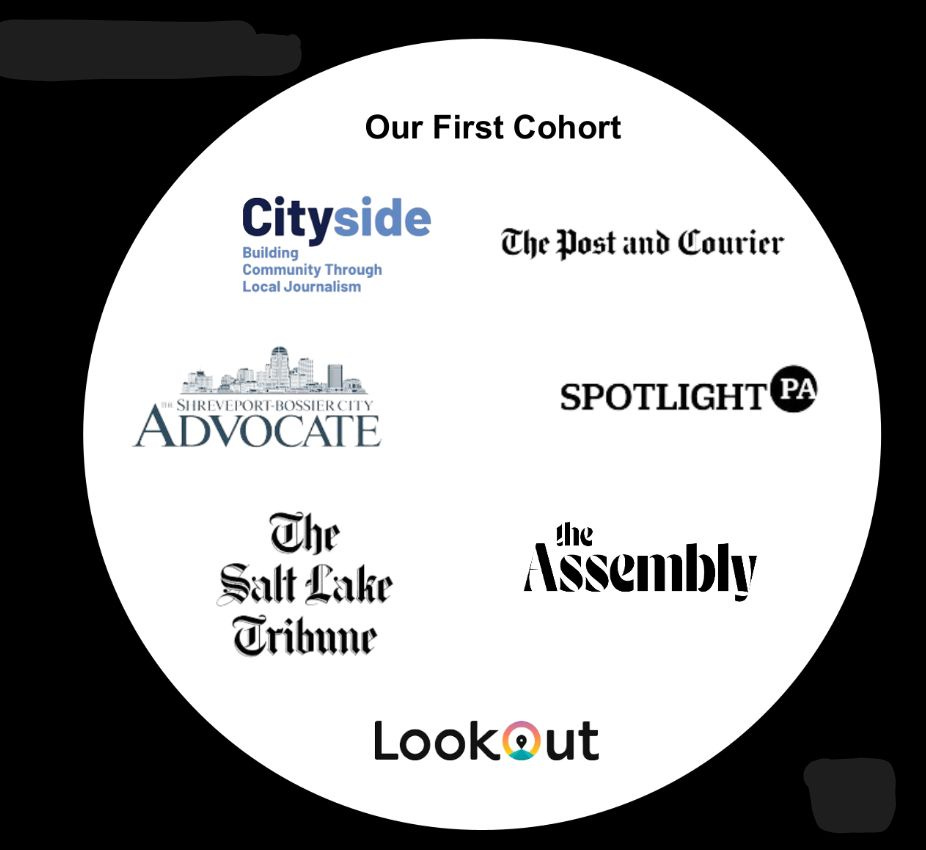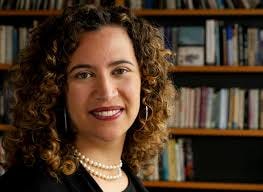How for-profit newsrooms can access philanthropic support
Like nonprofits, for-profits are tapping into grants, donations, support orgs

The following was adapted from an address to America’s Newspapers’ Mega-Conference.
There was a time when it was easy to distinguish a for-profit local newsroom from a nonprofit one. The for-profits sold ads, charged for subscriptions and typically landed on your doorstep in print form. The nonprofits raised money from grants and donations, perhaps offering a tote bag or mug in return. But those lines are being blurred with each passing year as legacy media struggles and digital upstarts test new paths to sustainability.
While many foundations have traditionally restricted grants to nonprofits, some are now rethinking that approach. For-profit newsrooms themselves are becoming more savvy by using fiscal sponsors to help facilitate grants and donations. Knight Foundation—founded by the Knight brothers. who ran successful for-profit newspapers—has always believed that for-profit publishers are critical to the health of the communities they serve. And as news deserts proliferate, especially in rural areas, many of these community newspapers remain the only trusted information source in their region.
We believe local news matters. Giving people the facts, holding power to account, informing communities––these are not just lofty ideals. They are the daily work of local journalists at community newspapers around the country. That’s why we are committed to supporting local news across the board, including for-profit, legacy and family-owned independent newspapers alike.
How Knight supports for-profit newsrooms
Knight’s approach to support local news is to invest in the broader media ecosystem, including tools, technologies and services that support the work of journalists. Here’s an abridged list of some of the ways we support for-profit newsrooms (many of these services are also available for nonprofit newsrooms):
Training and increasing diversity through varied programs such as the Poynter Institute, Maynard Institute, Knight x LMA BloomLab and many journalism schools across the country.
Trade associations such as the Local Media Association, LION Publishers, Tiny News Collective and Journalism Funding Partners that offer services such as funding labs, sustainability audits, fiscal sponsorship, and support for major gifts, respectively.
Tools and technologies through Newspack, News Revenue Hub, Indiegraf and BlueLena that help with content management, fundraising, startup support and revenue generation, respectively.
Resources for editorial staff through Report for America, PBS Frontline and ProPublica that offer reporting corps members, pay for staff investigations and investigative journalism expertise, respectively.
Business consulting on digital transformation through the Local Media Consortium and Reynolds Journalism Institute, with their expanded Digital on Demand Services program.
There are also some opportunities for direct funding of for-profit newsrooms. One is the Knight Growth Challenge Fund that has funded seven newsrooms (see graphic, above) to support their expansion into new markets to counteract news deserts. The other is Press Forward, the funder coalition that has invested more than $200 million in local news and now has Press Forward local chapters in 36 communities across the country. These chapters, led by local funders, have been granting millions of dollars to for-profit and nonprofit newsrooms, and many are expected to outlive the national program. In the most recent open call from Press Forward, 59% of direct funding went to for-profit newsrooms.
We’ve seen so many for-profit newsrooms take advantage of these resources and funding opportunities, transforming their business models, deepening community ties and positioning themselves for long-term impact.
Note: We put together a list of resources for publishers based on Knight’s infrastructure investments.
Other news around the horn…
Collaborations
🌟 ProPublica, Texas Tribune select five newsrooms for collaboration. Everything’s bigger in the Lone Star state, and now investigations will be bigger, too—and will take place in more corners of the state. That’s thanks to an ambitious collaboration between ProPublica, Texas Tribune and five partner newsrooms to cover “how power is wielded in Texas.” The partners include the nonprofit and for-profit newsrooms El Paso Matters, Fort Worth Report, Houston Chronicle, the Texas Newsroom and WFAA. The Texas Newsroom is also itself a collaboration among local public radio stations in the state. This new collaboration follows the creation of a Texas investigative reporting unit created by ProPublica and the Tribune in 2020. “Local newsrooms are primed to deliver accountability reporting because they intimately know the communities they cover,” said Vianna Davila, deputy editor of the ProPublica-Tribune investigative unit. “We hope to facilitate even more of that reporting at a critical time in Texas.”
✂️ Rural News Network covers local impact of Federal cuts. If there’s one strength of local news, it’s that it can show the local impact of important national stories. That’s needed now more than ever as the federal government freezes funds and cuts its workforce. Rural News Network (RNN) members stepped up in a big way to show the impact of those cuts in rural areas. That includes the Flatwater Free Press following a paper trail of concerned Nebraska state agencies, the Jefferson County Beacon in Washington State covering the dire effect of cuts to food banks and school lunches from the USDA and the North Dakota News Cooperative producing a podcast looking at the trade wars and their impact on the agriculture industry. Plus, RNN will launch a collaborative series covering the clean energy transition in rural areas, with funding from Ascendium Education Group.
🚀 AP Fund launches pilot program with 50 nonprofit newsrooms. Last year, the Associated Press announced a new AP Fund for Journalism (APFJ), a charitable organization to support local journalism. The APFJ launched its first initiative with 50 nonprofit newsrooms across the country, helping support their state and local reporting. The pilot program, with support from Google News Initiative, will give the participating newsrooms access to AP text, video and photo content, along with other editorial tools and trainings. “This pilot program is a critical first step in our mission, ensuring that state and local newsrooms have the tools they need to keep the public informed on stories and issues that wouldn’t otherwise receive coverage,” said APFJ CEO Rachel White. The AP also scored a legal victory, with a judge appointed by President Trump ruling that the White House must restore AP reporters’ access to presidential events.
Legal
⚖️ Mississippi Today wins press freedom case. Showing just how important legal resources are for independent newsrooms, Mississippi Today had to defend itself against a defamation lawsuit by former Gov. Phil Bryant after the publication exposed his role in a prominent welfare scandal (which led to a Pulitzer Prize). After nearly two years in court, Mississippi Today won a big victory for press freedom when a judge recently dismissed Bryant’s lawsuit. The nonprofit publication summed up the win in this way: “Mississippians routinely learn about the actions of their public officials only because of journalism like ours. This reality is precisely why we launched our newsroom nine years ago, and it’s why we devoted so much energy and spent hundreds of thousands of dollars defending ourselves against this lawsuit.” Legal. Resources. Matter.
Impact
🗒️ Student journalists bridge the gap in local news coverage. There was a time when student journalists fought for internships at newsrooms. Now the dynamic has flipped, with resource-strapped newsrooms needing student journalists to fill gaps in coverage. That’s the point Mark Caro makes in his deep dive for Medill into the growing trend of newsroom-academic partnerships and the central role that the Knight-funded Center for Community News (CCN) plays. Caro gives details on how CCN started with an effort led by the University of Vermont to create a news service by students that distributed stories throughout the state. He goes through other innovative efforts at schools such as University of Georgia, University of Missouri and Louisiana State University, all making big impacts in their communities with student journalists. The Nutgraf, a great Substack on student journalism, recently covered how students at the University of Arkansas and Ithaca College were covering how federal cuts and changes in policy were affecting local businesses and student life. “As headlines from Washington continue to ripple outward, student journalists are proving that local relevance doesn’t require proximity—just perspective,” wrote The Nutgraf’s Chatwan Mongkol.
Research
👎 INN: Facebook declines for referrals as Google grows. With all the moves Meta’s Facebook has made away from news (going so far as to fire all its fact-checkers), it’s no wonder that traffic referrals from the social network have cratered. By just how much? A research report from the Institute for Nonprofit News (INN) found that Facebook referrals were a paltry 2% in 2024 of what they were in 2018 for small publishers (see chart above). INN found that Facebook alone brought more than 40% of referral traffic in social media’s heyday; now, all social media combined for less than 15% of referral traffic for INN members. What’s filling the gap? Google now accounts for 40% of referral traffic, increasing the need for search engine optimization. INN also found that member syndication means that stories are now read more in for-profit news outlets, leading to deals with the AP, Microsoft and Apple News. Even more interesting is INN’s On the Ground program that helps nonprofit newsrooms more easily share stories, with the AP helping INN members’ political stories get accessed more than 1,500 times. Recent data showed that radio (32%), digital (30%) and TV (25%) led print (14%) in using these stories.
Call-outs
Fund for Investigative Journalism: The Fund awards grants of up to $10,000 for reporters to produce high-quality, unbiased, and nonpartisan investigative stories that make an impact. Freelance journalists, staff reporters and media outlets are eligible for grants, and their investigations can be for print, online or broadcast stories, books, documentaries or podcasts. The deadline to apply is May 5.
Community College Civic Info Challenge: The Journalism + Design program at The New School invites community colleges across the South to join a national movement that equips more people to play a role in keeping their communities informed, connected and vibrant. Five to eight winning applicants will win a trip to a summit in the South and the chance for further support in designing a program. J+D is also partnering with the New Mexico Local News Fund to offer Community News Transformation Grants of at least $30,000 to community colleges in New Mexico. Colleges in the South need to apply by May 2, and New Mexico colleges need to apply by April 18.
Fellowships
Elizabeth Neuffer Fellowship at IWMF
Women and non-binary journalists
MIT courses + internship at Boston Globe and NY Times
Stipend for living costs
Apply by April 20
StoryReach Fellowships at the Pulitzer Center
Journalists in 12 Midwestern states
$30,000
Apply by May 1
Jobs
American Journalism Project, Head of Strategic Partnerships
Learn more here.
The War Horse, Finance and Operations Manager
Learn more here.
Colorado Sun, General Manager
Learn more here.
Report for America, Director of Brand Strategy and additional positions
Learn more here.
Los Angeles Local News Initiative, Executive Editor and additional positions
Learn more here.
Mercer University, Journalism & Media Studies, Assistant Professor of Practice
Learn more here.
Upcoming Events 📅
Artificial Information: Communication Literacy in the 21st Century
Coral Gables, Fla.
April 25
Hacks/Hackers AI x Journalism Summit
Baltimore
May 7–8
Collaborative Journalism Summit
Denver
May 15–16
Lenfest News Philanthropy Summit
Philadelphia
May 20–22
Minneapolis
June 3–5
Philadelphia
June 10
Radio Television Digital News Association
New Orleans
June 11–13
Investigative Reporters & Editors
New Orleans
June 19–22
Association of Alternative Media
Madison, Wisc.
July 9–11
Independent News Sustainability Summit from LION Publishers
September 3–5, 2025
St. Louis
New Orleans
September 10–13
Keane, N.H.
October 7–9
Chicago
October 23–24
Quote of the Week
“All of the problems that are easy to solve with technology have been solved and things we’re left with are … longstanding social problems…As the media, we are responsible for holding power to account. We are responsible for holding algorithms and their creators for the social problems these algorithms are exacerbating.”
— Meredith Broussard, associate professor at the Arthur L. Carter Journalism Institute of New York University, speaking at the Summit on AI, Ethics & Journalism
*****
News @ Knight Credits
Written by Jim Brady & Duc Luu, with Mark Glaser
Edited by Jim Brady and Kara Pickman









